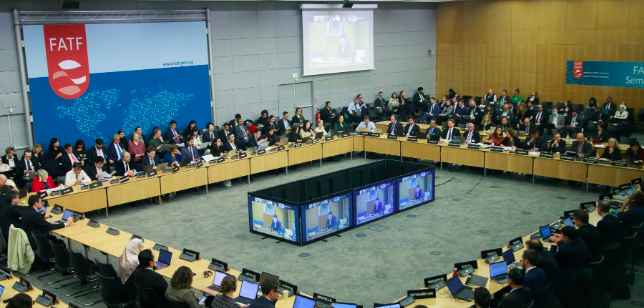
In the last couple of years, macroeconomic headwinds, higher interest rates and geopolitical unrest have written the story of the financial sector. These arid conditions have tested every major economy but have also left fund management scrambling for new options to raise capital.
With dramatic daily headlines about the situation, you’d think funds had succumbed to the pressures. Instead, hedge, hybrid and other open-ended funds have adapted and learned to thrive despite the challenges.
We’re here to look at the state of the market and exactly how the industry has acclimated to the new normal. Here’s a rundown of the market snapshot and where the inflection point for funds and capital raising has emerged.
A snapshot of fund jurisdictions
Recent data from the US Securities and Exchange Commission (SEC) reveals the top jurisdictions for fund formations in Q3 2023, with the US holding 52.4% of global fund domiciles and the Cayman Islands with 32.7% of the share. For comparison, the next jurisdiction, Luxembourg, is home to 4.9% of global fund formations.
This is backed up by the Cayman Islands Monetary Authority (CIMA)’s latest stats on open-ended and mutual fund registrations, which haven’t increased by huge proportions since 2021, but haven’t fallen either. In Q1 of 2024 there were 8,685 registered mutual funds, compared to 8,499 in 2021. As for private funds, these have increased from 14,679 in 2021 to 16.787 in Q1 of 2024.
All of this points to investment hubs like the Cayman Islands staying steady and even growing, despite the global economic turmoil. With a trend towards global fund terminations outstripping new launches, the Cayman Islands market holding steady is better news than expected. The funds industry might be down, but it’s not out.
Market dynamics and fund strategies
Now we can see the current economic landscape isn’t having as marked an effect on global fund formation in key investment hub regions; we can see how the industry has transformed itself to weather the storm.
Larger funds raising over USD$1bn+ have shown the most resilience, despite borrowing being harder to access. It’s likely that the longstanding investor relationships and proven track records have helped to buoy them, even as capital raising has gone quiet.
Unfortunately, the same can’t be said for smaller funds below USD$500m. The number of new funds in this category has tanked, which is unwelcome news for the smaller or start-up fund managers in the space.
Innovation in the sector
Some fund managers have taken the opportunity to turn lemons into lemonade. A wave of creativity in fund sponsoring has sprung up in their bid to compete for scarcer capital, which has resulted in innovative investment structures and diversifying into more appealing strategies for would-be investors that are less eager to part with their cash.
Some of these new approaches include separately managed accounts (SMAs), a diversified basket of assets managed by professional fund managers but targeting wealthy retail investors. Evergreen, or open-ended funds, have also gained popularity, which only need a gradual capital injection rather than the full amount up front. Cross-over funds, which combine private equity and public markets into one fund, are another option.
There’s no doubt parts of the sector are under siege: high interest rates persist globally, with central banks taking longer than expected to make cuts. But instead of folding, smaller funds have adapted to harness new opportunities. This flexibility could well define the industry’s trajectory in the coming years.
Other trends in fund management
There are some other notable trends in fund management that have come to the fore since the economic downturn began.
Credit funds
The more expensive borrowing landscape has meant that credit funds marked the biggest increase in fund launches last year. There’s no sign of this trend slowing, and our instructions in this area have steadily increased since 2021.
Tough negotiations
Another factor that’s underscored the resilience in the market is from stable management fees and successful negotiations by allocators. In 2023, the median management fee remained at 1.6%, with the performance fee at 18%. Notably, around half of the allocators secured fee discounts and 40% successfully negotiated more capacity rights. This is a clear sign that investors are looking to maximise returns in these challenging market conditions.
Liquidity profiles
Looking ahead, the careful management of liquidity profiles will be critical for flexibility. Currently 40% of funds use lockups, predominantly under 18 months. A similar percentage use gates, with the majority favouring investor-level over fund-level gates.
Carefully checking a fund’s liquidity is crucial to aligning the fund’s liquidity with its underlying asset profile. It’s a careful balancing act between stability and reacting to the changing market to maximise returns.
Wrapping up
The fund management sector has shown exceptional resilience and adaptability in the face of persistent headwinds. By focusing on innovation and working to its strengths, the industry has taken a bad economic situation and laid the groundwork for future prosperity.
Market fluctuations happen, and the funds industry is part of a wider financial sector that’s developed coping mechanisms in fallow periods. As we move forward, fund managers will have to keep innovating and adapting to stay afloat.

Tatziana Paraguacuto-Maheo is a partner in the London office of Walkers and heads the London Investment Funds Group.
E tatziana.paraguacuto@walkersglobal.com
C +44 (0)7908 544 065


